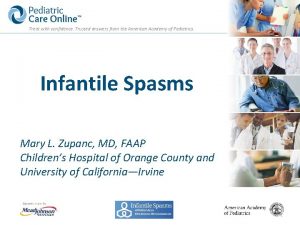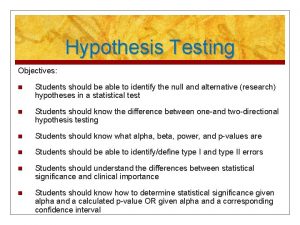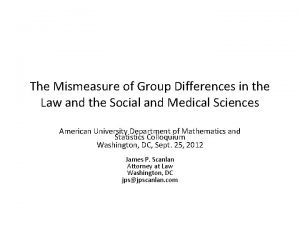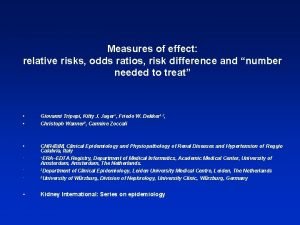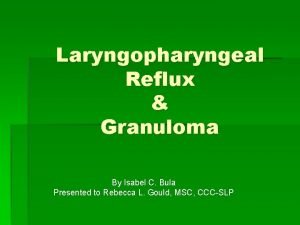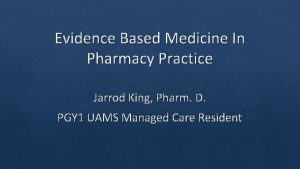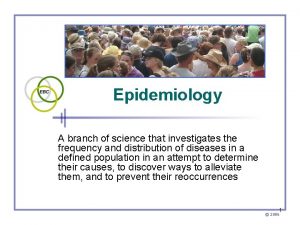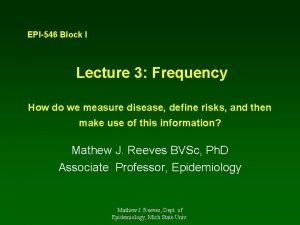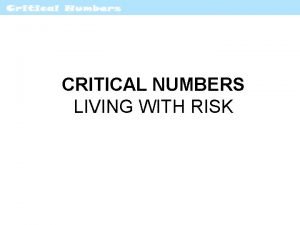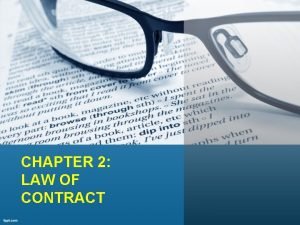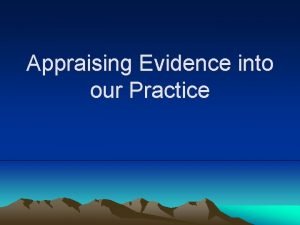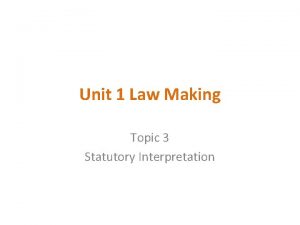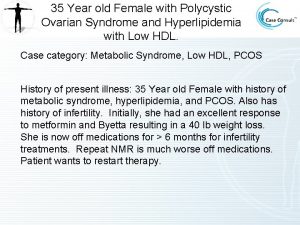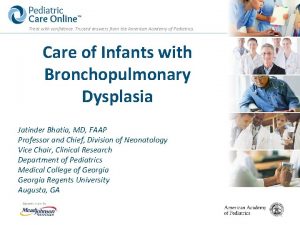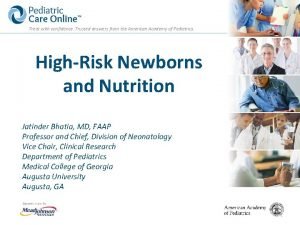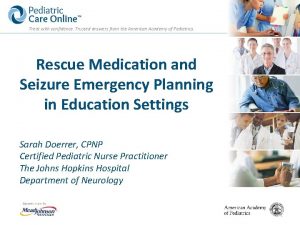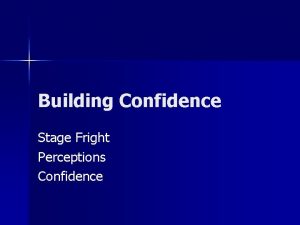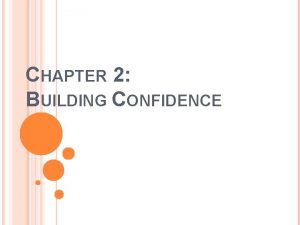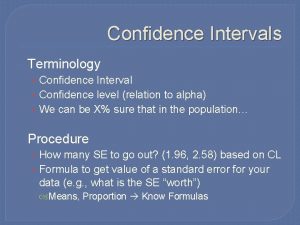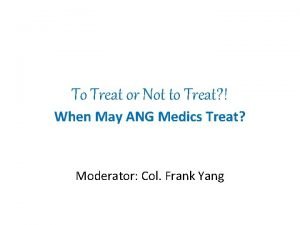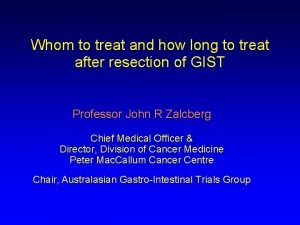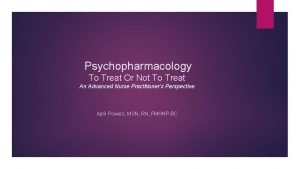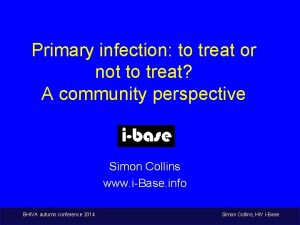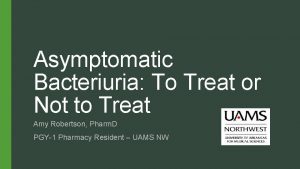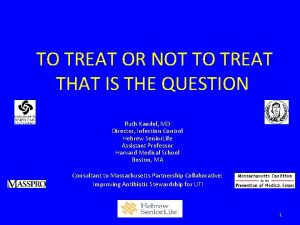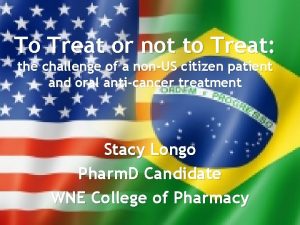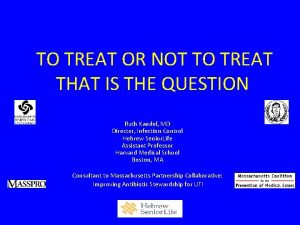Treat with confidence Trusted answers from the American






















- Slides: 22

Treat with confidence. Trusted answers from the American Academy of Pediatrics. Infantile Spasms Mary L. Zupanc, MD, FAAP Children’s Hospital of Orange County and University of California—Irvine

Treat with confidence. Trusted answers from the American Academy of Pediatrics. Disclaimer § Statements and opinions expressed are those of the authors and not necessarily those of the American Academy of Pediatrics. § Mead Johnson sponsors programs such as this to give healthcare professionals access to scientific and educational information provided by experts. The presenter has complete and independent control over the planning and content of the presentation, and is not receiving any compensation from Mead Johnson for this presentation. The presenter’s comments and opinions are not necessarily those of Mead Johnson. In the event that the presentation contains statements about uses of drugs that are not within the drugs' approved indications, Mead Johnson does not promote the use of any drug for indications outside the FDAapproved product label.

Treat with confidence. Trusted answers from the American Academy of Pediatrics. Epidemiology of Epilepsy § Epilepsy is a very common disorder. § Each year, 150, 000 children and adolescents in the USA will have a single unprovoked seizure. § 30– 45% of these children will go on to develop epilepsy. § 1. 0% prevalence of epilepsy in the general population. Bimodal distribution. § 1 in 5 people will have a single seizure in their lifetime.

Treat with confidence. Trusted answers from the American Academy of Pediatrics. Infantile Spasms § First described in 1841 by Dr. West: o At 4 months of age: “Slight bobbings of the head forward. . . These bobbings increased in frequency and strength. ” o At 1 year of age: “. . . He neither possesses the intellectual vivacity or the power of moving his limbs of a child his age. . . ” West W. On a particular form of infantile convulsions. Lancet. 1841; 1: 724– 725.

Treat with confidence. Trusted answers from the American Academy of Pediatrics. Infantile Spasms § Relatively common (1, 200– 2, 500 per year) § Onset at 3– 8 months of life § Characterized by clusters of flexor, extensor, or mixed myoclonic jerks § May have associated autonomic or focal features § Hypsarrhythmia pattern on electroencephalogram (EEG) § Associated with a poor developmental outcome § Non-standard antiepileptic therapies

Treat with confidence. Trusted answers from the American Academy of Pediatrics. Video 1 -Infantile Spasms

Treat with confidence. Trusted answers from the American Academy of Pediatrics. Video 2 -Infantile Spasms

Treat with confidence. Trusted answers from the American Academy of Pediatrics. Infantile Spasms—Hypsarrhythmia

Treat with confidence. Trusted answers from the American Academy of Pediatrics. Infantile Spasms—Ictal

Treat with confidence. Trusted answers from the American Academy of Pediatrics. Infantile Spasms—Ictal

Treat with confidence. Trusted answers from the American Academy of Pediatrics. Etiologies of Infantile Spasms § § § § Malformations of cortical development Neurocutaneous disorders (e. g. , tuberous sclerosis) Genetic syndromes, including Trisomy 21 Inborn errors of metabolism Hypoxic-ischemic encephalopathy Meningitis/encephalitis Stroke Trauma

Treat with confidence. Trusted answers from the American Academy of Pediatrics. What Causes Infantile Spasms? § Brain development requires excitatory pathways for active neurogenesis, synaptogenesis, and programmed apoptosis. § Subcortical pathways are initially better developed than the cortical pathways, resulting in subcortically mediated volleys of epileptogenic discharges.

Treat with confidence. Trusted answers from the American Academy of Pediatrics. Age-Dependent Epileptic Encephalopathies § Evolution of seizure semiology § Evolution of EEG characteristics § Directly correlated with the increasing, programmed synaptogenesis and reorganization of the developing brain § Results in increased synchronization of EEG and changing seizure phenotype

Treat with confidence. Trusted answers from the American Academy of Pediatrics. Outcome of Infantile Spasms § In children who are not controlled, the spasms generally evolve to other seizure types, including tonic seizures by 1– 2 years of age. § Most develop Lennox-Gastaut syndrome, with associated tonic, atonic, generalized tonic clonic, myoclonic, and atypical absence seizures. § If seizures persist, 70– 90% have persistent intellectual impairments.

Treat with confidence. Trusted answers from the American Academy of Pediatrics. Treatment of Infantile Spasms § Adrenocorticotropic hormone (ACTH)—Treatment of choice § Vigabatrin—Treatment of choice for patients with tuberous sclerosis § Prednisone—Not as effective § No standard antiepileptic medications have proven efficacy § A small subset of patients with infantile spasms may be candidates for epilepsy surgery

Treat with confidence. Trusted answers from the American Academy of Pediatrics. Infantile Spasms: What is Effective Treatment? § In the American Academy of Neurology (AAN) and Child Neurology Society (CNS) practice parameter, a “responder” is defined as: o Complete cessation of infantile spasms, as confirmed by video EEG monitoring o Elimination of hypsarrhythmia pattern on prolonged EEG § The goal of therapy is to treat the infantile spasms and the ongoing epileptic encephalopathy as seen on the EEG (i. e. , hypsarrhythmia pattern) Mackay MT, Weiss SK, Adams-Webber T, et al. Practice parameter: medical treatment of infantile spasms: report of the American Academy of Neurology and the Child Neurology Society. Neurology. 2004; 62(10): 1668– 1681.

Treat with confidence. Trusted answers from the American Academy of Pediatrics. Early Recognition and Treatment Can Affect Outcome § In a study of 37 children with cryptogenic infantile spasms, treatment started within one month of onset of spasms, using ACTH, followed by prednisone in decreasing doses, produced 100% normal outcome in 22/22 patients. § If treatment was initiated after one month, normal outcomes occurred in 6/15 patients (i. e. , only 40%). Kivity S, Lerman P, Ariel R, et al. Long-term cognitive outcomes of a cohort of children with cryptogenic infantile spasms treated with high-dose adrenocorticotropic hormone. Epilepsia. 2004; 45(3): 255– 262.

Treat with confidence. Trusted answers from the American Academy of Pediatrics. Early Treatment Affects Developmental Outcomes § In patients with tuberous sclerosis, only 18/50 patients (36%) had an IQ over 70. § Three factors are associated with poor developmental outcomes: o Increased time from infantile spasms onset to cessation o Increased time from treatment to cessation o Poor control of other seizures after infantile spasms Goh S, Kwiatkowski DJ, Dorer DJ, Thiele EA. Infantile spasms and intellectual outcomes in children with tuberous sclerosis complex. Neurology. 2005; 65(2): 235 – 238.

Treat with confidence. Trusted answers from the American Academy of Pediatrics. Infantile Spasms is a Medical Emergency § Immediate referral to a pediatric neurologist § These infants are often admitted to the hospital for quick confirmation of the diagnosis and initiation of treatment § The data now clearly supports the conclusion that early treatment, started within one month of onset of spasms, has a positive impact on developmental outcome and decreased risk of other seizures § The goal: No spasms; no hypsarrhythmia

Treat with confidence. Trusted answers from the American Academy of Pediatrics. Infantile Spasms § ACTH: The “Gold Standard” o FDA approved for infantile spasms o AAN/CNS practice parameter: ACTH is probably effective for the short term in infantile spasms treatment o Expensive o Side effects need monitoring § Vigabatrin: Best for some patients (i. e. , tuberous sclerosis) o FDA approved for infantile spasms o Requires specialty pharmacy o Side effects need monitoring

Treat with confidence. Trusted answers from the American Academy of Pediatrics. This webinar was developed with the support of a mini-grant from the Child Neurology Foundation.

Treat with confidence. Trusted answers from the American Academy of Pediatrics. Visit Pediatric Care Online today for additional information on this and other topics. http: //pediatriccare. solutions. aap. org Pediatric Care Online is a convenient electronic resource for immediate expert help with virtually every pediatric clinical information need with must-have resources that are included in a comprehensive reference library and time-saving clinical tools. Don’t have a subscription to PCO? Then take advantage of a free trial today! Call Mead Johnson Nutrition at 888/363 -2362 or, for more information, go to http: //pediatriccare. solutions. aap. org/SS/Free_Trial. aspx
 Boundaries meme
Boundaries meme Treat with confidence
Treat with confidence Confidence interval vs confidence level
Confidence interval vs confidence level How to interpret confidence intervals example
How to interpret confidence intervals example How did cyrus treat the people he conquered
How did cyrus treat the people he conquered Equation for number needed to treat
Equation for number needed to treat Invitation to treat
Invitation to treat How does juliet treat paris
How does juliet treat paris Which seedless plants have been used to treat bee stings?
Which seedless plants have been used to treat bee stings? Number needed to treat calculation
Number needed to treat calculation Offer
Offer How to treat laryngopharyngeal reflux
How to treat laryngopharyngeal reflux Calculate number needed to harm
Calculate number needed to harm How to calculate number needed to treat
How to calculate number needed to treat Interpreting relative risk
Interpreting relative risk Number needed to treat
Number needed to treat Guthing vs lynn case
Guthing vs lynn case Nnh calculation
Nnh calculation Mischief rule
Mischief rule Mffmm
Mffmm Summary of act 2 scene 4 romeo and juliet
Summary of act 2 scene 4 romeo and juliet Is byetta used to treat pcos
Is byetta used to treat pcos Treated with sincerity
Treated with sincerity

